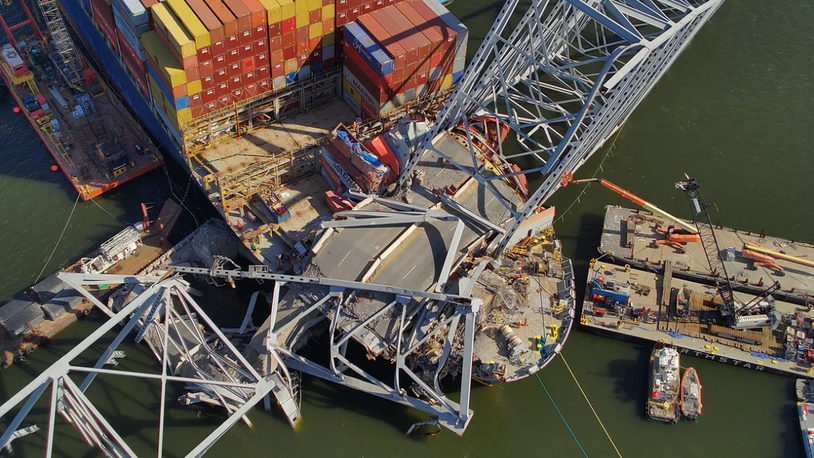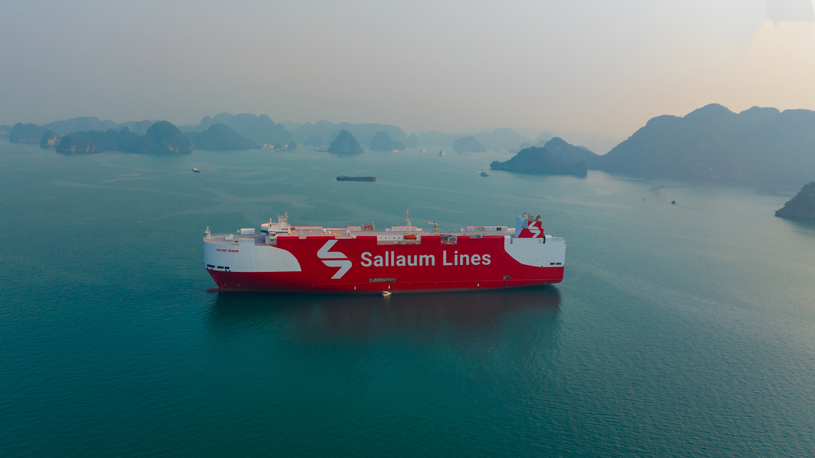Business Sectors
Events
Contents
Maritime satcoms offer an edge in challenging markets
VSAT-enabled vessels have a distinct advantage for efficient operations and enhanced crew welfare
Ships require greater levels of data and value-added services through VSAT and L-band companion satellite communications during the current coronavirus pandemic. A VSAT link alone is not sufficient for shipowners, operators and managers. They need an array of communications solutions and services to manage connectivity for operational requirements and crew welfare.
Reliable communication links are critical during this challenging time, which has seen the maritime sector impacted by travel restrictions, port closures, and mandatory quarantine periods.
With crew changeovers at a standstill and contracts extended for months, the demand for products that offer secure data and services over robust communication systems has increased tremendously.
IEC Telecom’s OneGate Marine device enables connected vessels to be operated as remote offices. By separating corporate and welfare environments, the vessel’s business-critical communications will keep functioning smoothly, regardless of the quantity of data consumed by crew.
OneGate can switch vessel communications seamlessly between VSAT, L-band and mobile phone networks (GSM) with least-cost routeing, maintaining maximum connectivity for minimum cost.
Operating from a virtual platform, OneGate supports remote maintenance enabling applications to be updated and upgraded remotely, which has been particularly important where quarantine measures have restricted access to vessels or prevented ships entering ports. A dedicated welfare link provides crew with access to social media and clear voice communications.
Online control
Using these smart devices, managers can reduce communications costs, monitor use, apply tougher security and control connectivity over VSAT. AST’s Integra helps manage communications over different frequency bands.
“These VSAT services are a real game-changer when it comes to giving shipping companies the ability to manage their data effectively,” says AST Group marine director Stuart Castell. “They can control their data usage down to the application level, even encrypted applications’ use can be monitored and controlled,” he says.
Managers can set data limits, usage alerts and can block individual applications using an online portal. AST’s Integra SEE application enables shipping companies to monitor communications by providing a category-based view of the data used monthly and a list providing the top 10 applications used on board.
Its Integra SEE+ provides greater visibility and additional options such as viewing application use in each category and viewing data usage in detail for the past three months, says Mr Castell.
AST’s Control Lite sets alerts on data usage for particular categories or the whole service. It can be upgraded to Integra Control 1.5 to control and block categories and applications, while setting bandwidth speeds per category and for the whole service via an online portal.
AST’s Integra Edge device manages onboard connectivity from GSM, wifi, L-band and VSAT communications. It enables captains to monitor communications speed and throughput in real-time and ensures there are no interruptions. There is an intelligent failover system that will automatically switch to L-band if there are VSAT issues.
There is also a full crew captive portal allowing seafarers to access internet applications without affecting onboard operations. Integra Edge enables ship masters to control access or block users or devices.
For cyber security there are firewalls and virtual local area network support. Shore managers can monitor and manage vessel connectivity using the Integra Edge cloud service.
AST offers VSAT in C-band and Ku-band through its partnership with ITC Global and other networks. It provides Ka-band using Telenor Satellite’s Thor 7 and Inmarsat’s Fleet Xpress service.
Remote management
World-Link Communications’ ShipSat 2.0 gateway provides centralised remote and proactive management of vessel’s broadband communications. It is accessed from shore for daily reports via the Maxima web portal.
ShipSat facilitates network monitoring, traffic priority, user administration, fleet file management and transfers, voice over IP (VoIP) and cost controls. For security it helps managers scan vessel network devices, set firewalls and manage networks.
World-Link’s ShipSecure takes this further with a comprehensive cyber security service, including real-time threat assessment and defence. It has advanced malware and ransomware protection, application awareness, URL and IP filtering, identity control and network firewalling.
“With enhanced broadband services on board fleets, vessels today are as vulnerable to cyber attacks as any office ashore,” says World-Link Communications president Asad Salameh. “ShipSecure delivers onboard vulnerability assessment, real-time protection and threat mitigation through a multi-layered approach addressing cyber threats at each level of a vessel’s network infrastructure.”
IT and security managers can obtain complete visibility of the fleet security posture through managed configuration and real-time reporting.
Secure email
World-Link’s ShipMail allows onboard users to surf the internet and use email, paying for the volume of exchanged data and not time spent online. It routes messages, stores information, compresses files, has remote web interfaces, rule-based security and enables remote software updates.
Otesat-Maritel’s s@tGate provides a range of services for bandwidth management and data transmission optimisation. It facilitates internet surfing, email, voice services and ICT management. s@tGate provides file compression, optimises broadband and network management.
Otesat-Maritel’s IRIS provides end-to-end network cyber security. It includes real-time monitoring of threats and network penetration, enabling shipowners to detect and neutralise threats and protect ships’ IT. IRIS also has access to a 24/7 security operation centre and e-learning tools.
Another tool is MailOnBoard Plus email service for managing communications, corporate domain name hosting, message compression and applying corporate e-mail policy frameworks.
GTMaritime introduced GTDeploy this year for deploying critical software and security patches to protect shipboard systems before threats emerge. This supports automatic updating by pushing out software fixes as soon as a newer version becomes available.
GTDeploy will add, refresh or uninstall security updates, patches or entire applications, while fleet IT managers can prioritise updates and select times for their implementation.
The company’s GTMailPlus is a stable and secure email service, independent of satellite communications providers. It is a cloud-based service, optimised for the limited bandwidth available in maritime with remote configuration and administration. Its cyber defences include email filtering, network segregation and unified threat management.
Inmarsat’s Fleet Secure Endpoint provides cyber security on ships. It identifies risks and threats on local networks, then blocks potential cyber attacks based on file detection, intelligent behaviour analysis and low-level system calls on the network.
Inmarsat has a security operating centre for network monitoring, produces reports on vessel IT hardware and software and alerts administrators if events happen on board, such as virus detection or outdated software.
“Ships must be able to demonstrate what assets, personnel and procedures are in place on board and ashore to deal with cyber risk issues, what happens if systems are compromised and who has control,” says Inmarsat senior vice president of safety and security Peter Broadhurst. “Compliance will depend on having the right risk management infrastructure and procedures in place.”
IoT applications
Shipping companies can capture and analyse operational data through dedicated pipes for internet of things (IoT) information from vessels. Inmarsat’s Fleet Data is a stream for IoT data above its regular bandwidth pipe. It extracts data from sensors and uploads it to a secure central cloud-based database for easy access with no additional airtime cost.
In conjunction, Inmarsat has introduced a certified application provider (CAP) programme for services and start-ups. Its latest CAP is Brazilian start-up i4sea, which provides weather forecasting application i4cast Atm Ocean on Fleet Data.
Six integrated tools are offered and include services such as ocean and local weather forecasts, dynamic draught prediction and terminal efficiency analytics.
Ascenz became a partner in December 2019 and its Shipulse connects with the application process interface and conducts analysis on vessel data to provide key performance insights and develop customised reports, enabling better decision-making for optimised vessel performance. Inmarsat expects to introduce more CAP partners throughout 2020
In January, Inmarsat and ITC Global started a five-year strategic collaboration in the maritime, yachting and offshore energy sectors. ITC Global will offer Fleet Xpress Ka-band communications in these sectors on top of its existing Ku-band offering. ITC Global is a subsidiary of Panasonic Avionics Corp, which has built a network of Ku-band satellite coverage.
Remote health services
Telemedicine has become an increasingly important service during the coronavirus outbreak. It enables seafarers to speak directly to health experts for advice. Marlink’s telemedicine solution XChange Telemed brings mariners and health professionals together over video links.
It facilitates regular preventive screenings, remote emergency response and automatic transmission of the medical data to hospitals. Telemedicine applications assist remote follow-up consultations with doctors in hospitals over video links.
These will be required to meet new Maritime Labour Convention and IMO’s requirements for health and medical treatment on ships, including emergency medical consultations and supporting crew wellbeing.
XChange Telemed includes a telemedicine station in a vibration-proof case and secure patient file management system. This has certified medical equipment – blood pressure monitor, electro cardiograph and pulse oximeter – touchscreen user interface and high definition camera. Optional extras include stethoscope, ultrasound, eye analyser, dental examination camera, dermascope, glucometer, otoscope and thermometer.
This telemedicine service uses Marlink’s Sealink Ku-band VSAT and Xchange connectivity management system. During the coronavirus crisis, Marlink is providing free access to XChange Telemed and its XChange Media service to access news and sports content. It is also offering free minutes for crew on all vessels equipped with Sealink VSAT.
Marlink provides XChange Universal Remote Access for essential IT maintenance and XChange Cloud Entry to optimise and simplify file transfers with no activation fee or monthly charge until July and free access to its KeepUp@Sea Monitor service to simplify remote monitoring and analysis of onboard IT hardware and software.
End-to-end communications
A communications network is more than just VSAT and L-band. It also includes wide area networks, ground infrastructure and fibre optic lines. Orange Business Services’ Multiprotocol Label Switching (MPLS) network incorporates all of this infrastructure. This has helped container shipping group ZIM enhance its connectivity.
Orange global MPLS network helps implement mission-critical communications with optimised routeing and guaranteed continuation of service. It has unified communications and cloud services, reduced management time, improved reliability and availability and lowered costs for ZIM.
Riviera Maritime Media will present discussions covering digitalisation, digital twins, implementing digital strategies and voyage planning during Vessel Optimisation Webinar Week, giving operators vital insights into the options available to extract maximum value from vessel operations. 12-15 May
Related to this Story
Events
Maritime Environmental Protection Webinar Week
Cyber & Vessel Security Webinar Week
The illusion of safety: what we're getting wrong about crews, tech, and fatigue
Responsible Ship Recycling Forum 2025
© 2024 Riviera Maritime Media Ltd.















